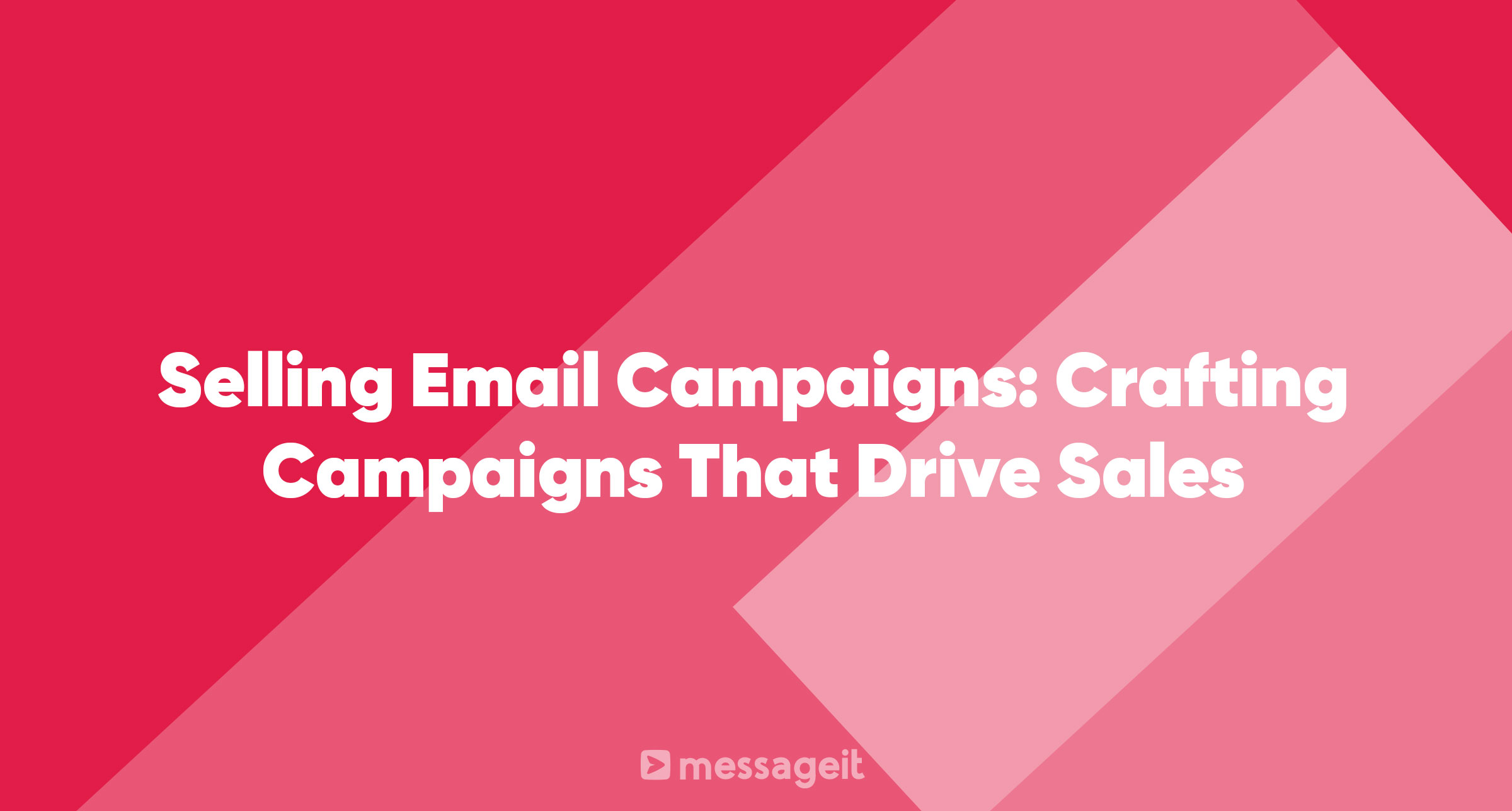Email marketing remains a powerful tool for businesses across various sectors. With the right strategy, you can transform your email campaigns into a revenue-generating powerhouse. This guide explores the essential elements of crafting selling email campaigns that yield substantial results.
Understanding the Power of Email Marketing
Email marketing is a well-established strategy used by businesses to nurture relationships, boost brand awareness, and ultimately, drive sales. This strategy is highly effective due to its ability to deliver tailored content directly to the inbox of a potential buyer. It's a targeted method that puts your message in front of the audience that matters most.
A study by the Data & Marketing Association indicates that email marketing returns between $30 and $50 for each dollar invested, making it a high ROI channel.
Email Marketing for B2B and B2C
Email marketing comes in two primary forms: B2B (Business to Business) and B2C (Business to Consumer). B2B email marketing focuses on building relationships with potential clients, enhancing brand recognition, and generating sales. It involves sending newsletters, special offers, product updates, and more to recipients who find such content valuable.
On the other hand, B2C email marketing often targets individual consumers, promoting products, discounts or incentives directly to the consumer's email.
Key Components of Effective Selling Email Campaigns
Several elements distinguish highly effective selling email campaigns. Three of these elements are particularly crucial:
1. Account-based Email Targeting
Account-based targeting involves sending unique emails to different individuals within the same target company. Each email is crafted to resonate with the recipient's specific role, needs, and interests.
2. Long Sales Cycles
In B2B marketing, the purchasing process often tends to be longer compared to B2C. It involves getting various departments to agree on a purchase decision, which can be time-consuming. Therefore, crafting emails that nurture the lead throughout this extended cycle is crucial.
3. Content that Adds Value
Successful B2B emails often focus on providing detailed resources and valuable information. Educational content such as growth reports, industry standards, buyer guides, and more demonstrates the value of your brand, building trust and eventually driving sales.
Top Tips to Craft Selling Email Campaigns that Drive Sales
Here are five key pointers to help you craft selling email campaigns that boost your bottom line:
1. Create Compelling Subject Lines
The subject line is the first thing a recipient sees, and it significantly impacts whether they open your email or not. A compelling subject line can pique curiosity, prompting the recipient to open the email.
2. Keep Your Email Copy Concise
While there's no strict word limit for emails, research suggests that emails containing between 50 to 125 words generate the best engagement. Keep your message clear and concise, making it easier for readers to grasp the key points.
3. Use Visible and Actionable CTAs
Your Call to Action (CTA) should be clear and direct. It tells the reader what step to take next. Using a CTA button can increase click-through rates by 28% compared to a plain-text link.
4. Leverage Email Marketing Automation
Email marketing automation can increase efficiency and improve email performance. Automation tools help optimize email sending times and enable remarketing to visitors on your website.
5. Utilize A/B Testing
A/B testing allows you to compare different versions of your emails to determine which one performs best. It provides accurate data to guide your email marketing strategy and achieve desired outcomes, such as increased sales.
Troubleshooting Your Email Marketing Campaign
If your email campaigns aren't driving sales as expected, it's worth evaluating a few factors:
1. Quality of Your Email List
A successful email campaign requires a robust email list comprising individuals genuinely interested in your content. Ensuring that you have a high-quality, high-intent email list is critical.
2. Audience Segmentation
Segmenting your audience allows you to send personalized emails to different groups based on their unique needs and interests. This approach can significantly boost engagement and conversions.
3. Over-automation
While email automation is a valuable tool, overdoing it can lead to a barrage of emails that may annoy your subscribers and land you in their spam folders.
4. Content Quality
Ensure you're not only sending promotional emails. Mix your content to include informational and valuable content that resonates with your audience and builds trust.
5. Spam Filters
If your emails are ending up in spam folders, you may need to adjust your email settings. Using double opt-in and avoiding spam-like phrases can help bypass spam filters.
Conclusion
Email marketing remains a pivotal strategy for driving sales. By understanding the nuances of email marketing and applying best practices, you can craft selling email campaigns that effectively boost your bottom line. However, always remember to measure other metrics such as clickthrough, bounce, email forwarding rate, open rate, and un-subscriptions to assess your campaign's performance accurately.
